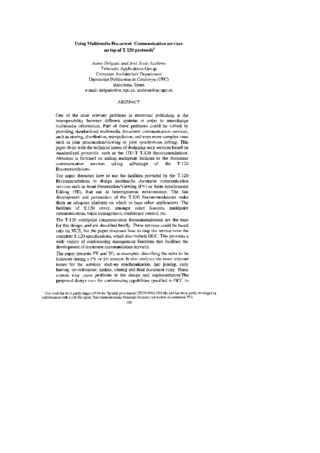One of the most relevant problems in electronic publishing is the interoperability between different systems in order to interchange multimedia information. Part of these problems could be solved by providing standardized multimedia document communication services, such as storing, distribution, manipulation, and even more complex ones such as joint presentation/viewing or joint synchronous editing. This paper deals with the technical issues of designing such services based on standardized protocols, such as the ITU-T 1.120 Recommendations. Attention is focussed on adding multipoint facilities to the document communication services taking advantage of the 1.120 Recommendations. The paper discusses how to use the facilities provided by the 1.120 Recommendations to design multimedia document communication services such as Joint Presentation/Viewing (PV) or Joint Synchronous Editing (SE), that run in heterogeneous environments. The fast development and penetration of the T.120 Recommendations make them an adequate platform on which to base other applications. The facilities of 1.120 cover, amongst other features, multipoint communication, token management, conference control, etc. The 1.120 multipoint communication Recommendations are the base for this design, and are described briefly. These services could be based only on MCS, but the paper discusses how to map the service onto the complete 1.120 specifications, which also include GCC. This provides a wide variety of conferencing management functions that facilitate the development of document communication services. The paper presents PV and SE, as examples, describing the rules to be followed during a PV or SE session. It also analyses the most relevant issues for the services: start-up synchronization, late joining, early leaving, co-ordination, update, closing and final document copy. These aspects may cause problems in the design and implementation.The proposed design uses the conferencing capabilities specified in GCC tosupport PV and SE services. The paper discusses how to solve the relevant issues of PV and SE using the facilities of GCC (and T.120, in general).
Delgado, Jaime, and Jose Jesus Acebron. "Using Multimedia Document Communication services on top of T.120 protocols." In Electronic Publishing '97 - New Models and Opprtunities: Proceedings of an ICCC/IFIP Conference. ELPUB. Canterbury, UK: University of Kent, 1997.
